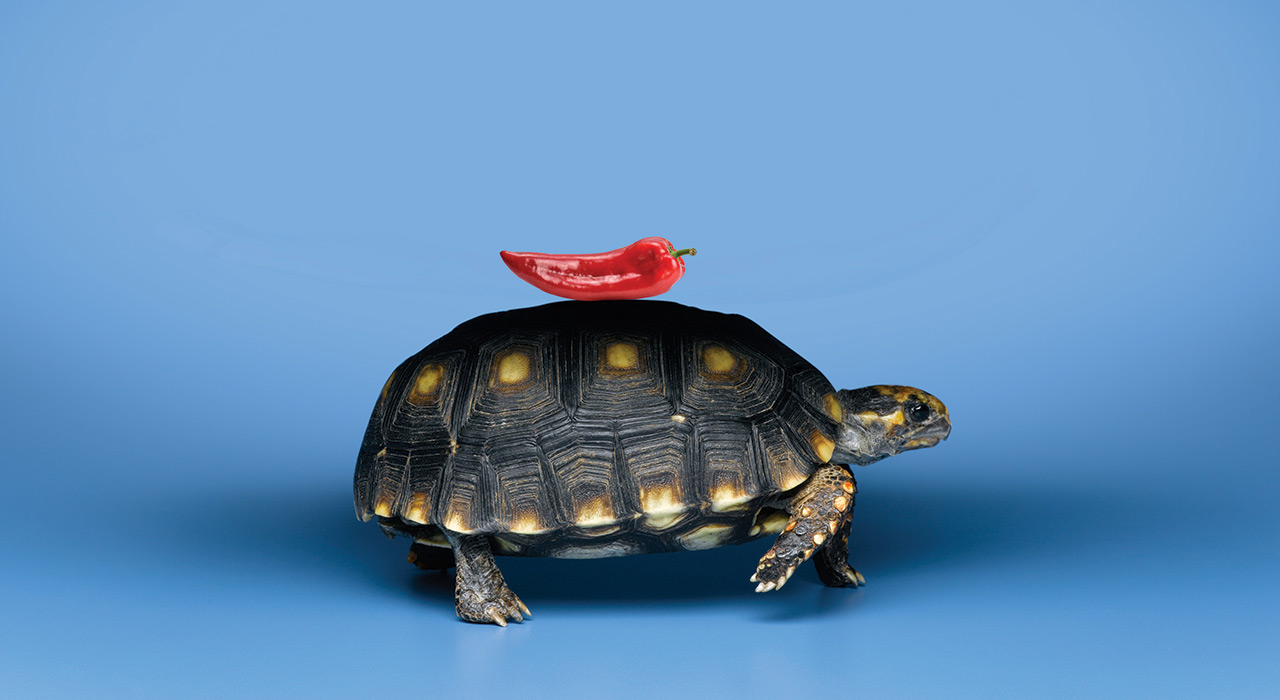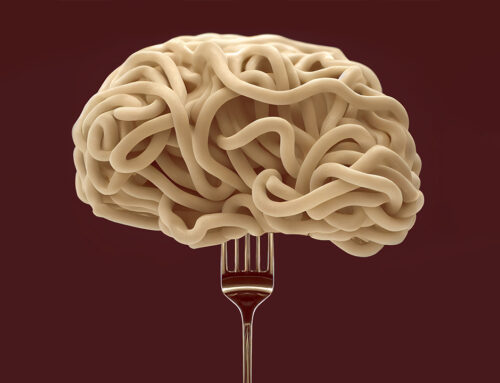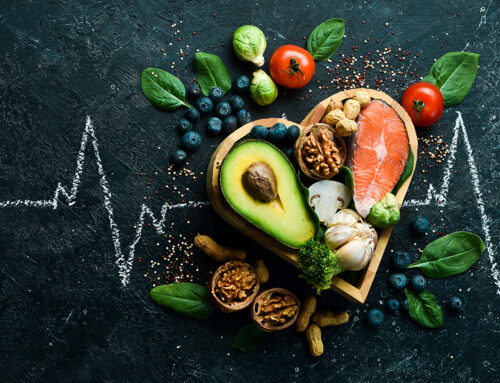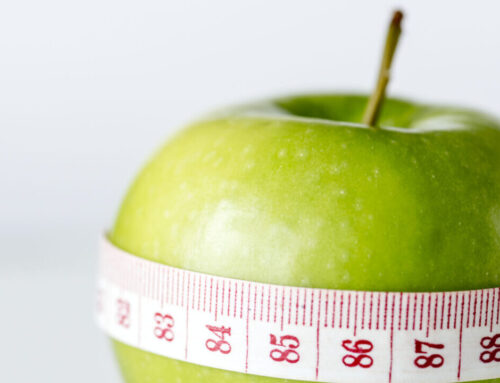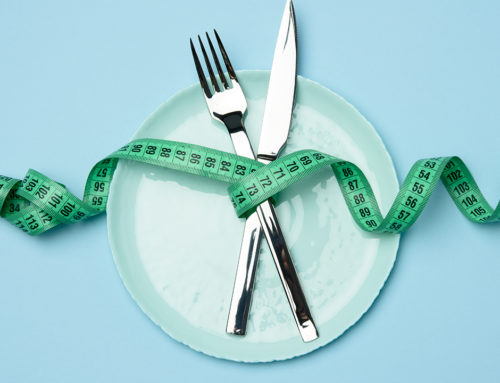Struggling to shift the pounds? If you think it’s easier for you to gain weight than keep the pounds off, you’ve probably wondered at some point if you have a slow metabolism and how you can speed it up. Here’s everything you need to know about your effortless calorie burn.
Let’s start with the basics. Metabolism refers to every physical and chemical process in the body that uses energy in order to maintain life. This includes body temperature, breathing, muscle contraction, digestion and more.
Variations between people in base metabolism are actually quite small. Most people have a similar base metabolic rate (BMR) which is the amount of energy burned off while at rest. If you’re of average height and weight, nine times out of ten you will burn the same number of calories as anyone else with a similar body type.
The variation in metabolic rate for most people is usually outweighed by errors made when calculating calories consumed, or overestimating the calories burned during exercise.
How common is a slow metabolism?
Many people blame a slow metabolism for them not being able to lose weight. This complaint is so common that a team from Columbia University ran an experiment on a group of people who had failed at dieting in the past and blamed their metabolism. These people had reported calorie intakes as low as 1,200 calories a day – or even less – but had not lost weight.
It seemed there were two possibilities, they had a slow metabolism or they were making mistakes when counting calories in and out.
To work out what was going on, these subjects were carefully monitored for a period of two weeks. During this time, their calorie intake and metabolic rate were accurately measured. The conclusion? Their metabolic rates were normal. The results of this may leave you stumped, wondering why the participants faltered in their fat loss plans when all had a seemingly ‘normal’ metabolism.
Surely, isn’t it as easy as ‘eat less, move more?’ Not quite, even though it’s often said all you need to do to lose weight is to ‘move more’. This sounds good in theory, but it’s one of the most common pitfalls that prevents people from reaching their fitness goals. And it revolves around one simple fact: you have to be in a calorie deficit to achieve weight loss.
If you think you can eat what you like as long as you hit the gym, then that’s where you’re going wrong.
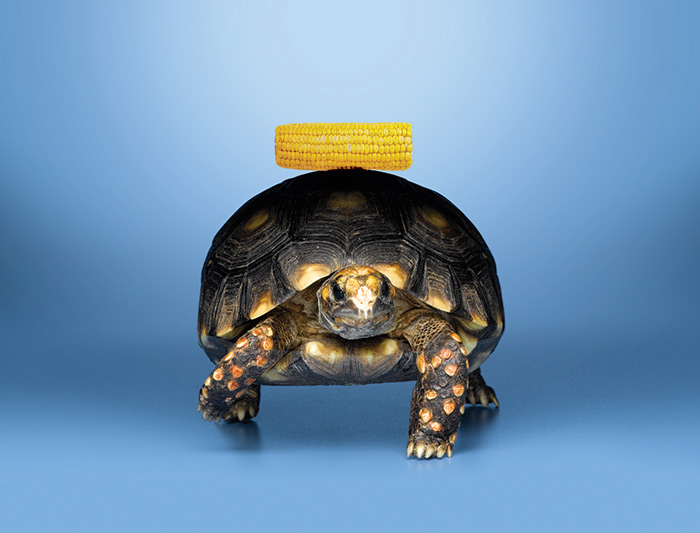
Are you overestimating calories burned?
You probably don’t burn as many calories as you think when you exercise. If your weight is average, a 3-mile run (20-40 minutes of jogging for most people) burns about 300 calories. If you do a 45-minute workout in the gym, you probably burn about the same number of calories. However, if you put your workout into a calorie calculator, or rely on the calorie estimates from apps like Strava or MapMyRun, you are likely to overestimate the number of calories you are burning.
Studies have shown that when people are asked about how many calories they think they burned in a workout, they consistently overestimate the number.
Last year, a team of researchers from Stanford University revealed just how accurate wrist worn calorie estimators are. They accurately measured energy output for a variety of activities, and compared their measurements to those provided by five common wrist-worn exercise devices. The results were scary. Every device overestimated calorie expenditure by more than 20% for every activity, with average errors for devices varying from 27% to a huge 93%.
Unfortunately, it appears that modern technology might not be helping. If your wrist watch heart rate monitor tells you you’ve burned 1000 calories in a workout, depending on your device, you’ve probably actually only burned 600-700 calories. It’s wise to err on the side of caution when it comes to figuring out how many calories you’re frying off when you’re sweating.
Are you underestimating calories consumed?
People are not very good at guessing how many calories their food contains. Even fitness trainers often underestimate how much food they’re eating.
As an example, 300 calories is equivalent to about one small slice of cake, two lattés or 75g of rice. The Columbia University study does provide us with some food for thought. When comparing the number of calories participants claimed to have eaten to actual calorie intake, it was found they had under-reported by an average of 47%.
When it comes to achieving fat loss, that margin of error can easily be the difference between success and failure.
Has your metabolism evolved away from carbs?
While Paleo-loving folk assert that it is their dietary habits that have seen humans build skyscrapers and plonk dudes on the moon, it could be a very different story altogether. A paper in The Quarterly Review of Biology found plant foods high in starch were absolutely crucial for the evolution of human genes and development. They do admit that while previous studies show that a meat-based diet was crucial to the development of the brain and other human traits, it was digestible carbs, cooked to become palatable, that were also necessary to give people energy for life.
Back then it took calories to make advancements and cooked carbs provided a plentiful source of these, supplying oomph to the brain, red blood cells and to developing fetuses. This was seconded by a paper by the University of North Carolina which discovered a low-carb diet actually increased the risk of birth defects. “Up until now, there has been a heavy focus on the role of animal protein in the development of the human brain over the last two million years,” said Professor Jennie Brand-Miller from the Charles Perkins Centre, who co-authored the Quarterly Review of Biology research with Professor Les Copeland from the University of Sydney’s Faculty of Agriculture and Environment and international colleagues. “The importance of carbohydrate, particularly in the form of starch-rich plant foods, has been largely overlooked. Our research suggests that dietary carbohydrates, along with meat, were essential for the evolution of modern big-brained humans. The evidence suggests that Paleolithic humans would not have evolved on today’s ‘Paleo’ diet.” The study’s authors say that sticking to a diet that is similar to the Paleo way of eating is smart but it should include underground starchy foods such as potatoes, taro, yams and sweet potatoes as well as the newer starchy grains such as wheat, rye, barley, quinoa and millet.
So, if you want to nourish the caveman body you’re supposed to have, then carbs should continue to be on your menu if you want to optimally fuel both body and mind. Your brain thrives on a hearty feed of them, so don’t deny it its just desserts.
If your BMR doesn’t vary much, what makes the difference?
Your total energy expenditure (TEE) is the total of the following elements:
- Basal Metabolic Rate (BMR): this is the energy your body burns to keep you alive. Everyone has a slightly different basal metabolic rate, which is dependent on your height, weight, muscle mass and genetic make-up. A larger person with more muscle will burn more calories than a smaller person, or one with less muscle.
- Non-Exercise Activity Thermogenesis (NEAT): the calories you burn by moving around, but not through deliberate exercise. If you are generally active, always on your feet or fidget a lot, you will burn a lot of calories this way.
- Exercise Activity Thermogenesis (EAT): the calories burned through deliberate exercise. The more you do, the more calories you burn.
- The Thermic Effect of Food (TEF): this refers to the energy your body uses to process the food you eat. The less processed food you eat, the more work your body has to do to digest it.
Program of action
Exercise makes you hungry. When you get back from a hard workout, chances are you will feel the need to snack or eat a big dinner. Unfortunately, it’s all too easy to eat just as many or more calories than you burned off in your workout.
The reward food you have for exercising often undoes the calorie deficit you’ve achieved.
Remember – not all your movement even needs to be gym based. Non-Exercise Activity Thermogenesis (NEAT), the fancy way of referring to the calories burned when you’re generally active, could be boosted by something as simple as a lunchtime stroll outside the office.
Exercise is great for lots of reasons, including burning calories, but it will only help weight loss if you are eating the right number of calories. If you want to lose weight, don’t try to ‘out-train’ your diet – change your diet.


